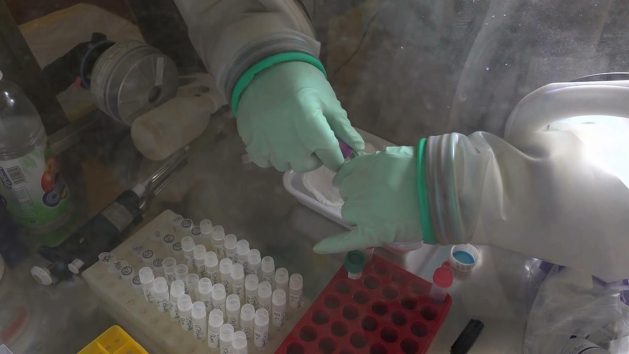Four Ways to Prevent Deaths from Lassa Fever

ABUJA, Nov 27 (IPS) - Wouter, a Dutch doctor who helped perform surgeries and train colleagues in surgical skills in underserved areas of Sierra Leone died of Lassa Fever. He was infected as a result of performing a Caesarean section on an infected pregnant woman.
This was a very painful and avoidable death. I mourn with his family and the Dutch people over this loss. No health worker should die while trying to save lives. Sadly, every year 5,000 West Africans die from Lassa fever.
Lassa fever is a viral disease of inequity and disproportionately affects poor people. There are an estimated 100,000 - 300,000 annual cases of Lassa fever across West Africa, according to the U.S. Centres for Disease Control. Countries endemic for Lassa fever include Guinea, Liberia, Sierra Leone and Nigeria.
The infection is a type of hemorrhagic fever, which is transmitted via contamination of foods and water by poop of a species of rats that are common across the region. Poor sanitation is a predisposing factor to multiplication of these rats.
Without a doubt, Lassa fever is common. For instance, based on recent epidemiological report by the Nigeria center for disease control, there are 101 suspected cases of Lassa fever, 11 confirmed cases and one reported death across 40 local councils in 11 States, including Nigeria's federal capital city Abuja.
Based on November 2019 records, there were seven cases of Lassa fever and 2 deaths in Sierra Leone. While in Liberia, Lassa fever killed 21 as at September 2019.
Due to poor health systems across endemic countries, health workers in the line of duty are also at risk of Lassa fever. In a previous opinion piece, I wrote about Idowu, a young Nigerian Doctor who contracted Lassa fever after treating an infected 7-month old baby in north-central Nigeria in 2018. Dr. Idowu died less than a month later.
Another victim, Dr. Emeka got infected after treating a newborn that was bleeding profusely on admission. Dr. Emeka was abandoned by his colleagues and had to pay for his treatment in one of Nigeria's Lassa fever reference hospitals. Although Dr. Emeka survived, he lives with Lassa fever complications.
Why should a disease whose causative organism, mode of transmission and treatment are known still be killing thousands every year? The answer to this question underscores the inequity around Lassa fever.
These are ways to ensure Dr. Wouter's death is not in vain.
First, the international community must invest in producing a Lassa fever vaccine. This would be beneficial to endemic communities as well as protect health workers who work in such communities.
It is commendable that the Coalition for Epidemic Preparedness Innovations (CEPI) has put out an advert for grants to develop a vaccine against Lassa fever. The total grant amount is $44 million. This initiative is a good one and should be supported by governments, ministries of health, communities, civil society organisations and the private sector.
Second, governments must prioritise other social issues that have huge influence on health and health-seeking behaviours. These are called social determinants of health and include access to clean water, availability of community sanitation, provision of education for all and promotion of healthy behaviours.
Poor sanitation is implicated in the spread of Lassa fever. As long as communities in endemic countries keep lacking access to clean water and are not educated about the benefits of keeping their environs clean, Lassa fever would continue to be endemic.
Third, governments should provide universal access to healthcare. No one should be denied care because of their inability to pay at the point of need. The World Health Organization's definition of universal health coverage includes a spectrum of prevention, promotion, treatment, rehabilitation and palliation. All five components are important to stop Lassa fever.
Specifically, prevention of Lassa fever entails that countries also invest in epidemic preparedness. As it stands, no country in Africa is prepared for epidemics based on scoring by preventepidemics.org. This has to change to save lives and improve economic wellbeing on the continent.
Fourth, health workers must adhere to strict Infection, Prevention and Control (IPC) protocols at all times when attending to patients. As committed as health workers are to saving lives, they must realise that they need to be alive to do so.
The Lassa fever public health advisory for health workers by the Nigeria centre for Disease Control strongly advises health workers to observe these protocols regardless of patients' presumed diagnoses.
The IPC protocols include proper wearing and removal of face masks, hand gloves, gowns, and goggles before and after entering the patient's room; washing of hands with soap under running water always; limiting invasive procedures such as injections; and appropriate disposal and disinfection of items used by Lassa fever patients etc.
As we mourn Dr. Wouter, the global health community should be reminded that no one should die of Lassa fever in the 21st century; not health workers and definitely not poor people in endemic communities.
© Inter Press Service (2019) — All Rights ReservedOriginal source: Inter Press Service
 Global Issues
Global Issues